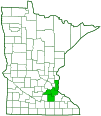root maggot fly
(Hydrophoria lancifer)
Conservation • Description • Habitat • Biology • Distribution • Taxonomy
|
|
||||||||||||||
Description |
Hydrophoria lancifer is a small to medium-sized fly, a medium-sized to large root maggot fly. It is native to northern Europe. In the 1920s it was introduced into North America, where there are now two widely separated populations. The eastern population extends from Newfoundland and Ontario south to Pennsylvania and Iowa. The western population is mostly restricted to British Columbia, Alberta, and Washington. Hydrophoria lancifer is hairy and grayish-brown or yellowish-brown. It resembles a house fly in appearance. It can be ⅛″ to 7⁄16″ (4 to 11 mm) in length but is usually no more than 5⁄16″ (8 mm) long. There are two large compound eyes at the side of the head and three small simple eyes (ocelli) in a triangle at the top of the head. The compound eyes are brown and hairless. They do not meet at the top of the head in either sex. They are narrowly separated on the male, widely separated on the female. The antennae have three segments. The second segment has a longitudinal groove (suture) on top. The third segment has a short, forward-pointing bristle (arista) on the upper side. The arista is covered with long hairs (plumose). On the upper side of the thorax there are two longitudinal rows of bristles (acrostichal bristles). The rows are close together. On each side of the thorax there are several hardened body plates (sclerites). The sclerite just above the base of the middle leg (sternopleuron) has a single bristle. The sclerite just above the base of the hind leg (hypopleuron) has no bristles. The plate between the thorax and the abdomen (scutellum) is covered with short hairs. As with all flies, there is only one pair of wings, the hind wings being reduced to small, knob-like structures (halteres) that are used for balance in flight. The wings are mostly clear, with no dark spots, but are yellowish at the base. At the base of each wing there are two small, rounded lobes (calypters) that cover the halteres. The calypters are well-developed. The lower calypter extends distinctly beyond the upper one. The first posterior cell (R5) is has parallel sides – it is not narrowed toward the end. The second anal vein (2A) reaches the inner margin. The legs are long, slender, and mostly dark. The fourth segment (tibia) of each leg may be yellowish or dark. There are two long bristles on the upper side of the hind tibia. The lower bristle is longer than the upper bristle. |
Size |
Total length: ⅛″ to 7⁄16″ (4 to 11 mm) |
Similar Species |
Habitat |
|
Biology |
Season |
Mid-April to late September |
Behavior |
|
Life Cycle |
|
Larva Food |
Animal dung |
Adult Food |
|
Distribution |
||
|
Sources |
|
| 8/27/2024 | ||
Occurrence |
||
|
||
Taxonomy |
|
Order |
|
Suborder |
Brachycera |
Infraorder |
Cyclorrhapha |
Zoosection |
Schizophora |
Zoosubsection |
|
Superfamily |
Muscoidea |
Family |
Anthomyiidae (root-maggot flies) |
Subfamily |
Anthomyiinae |
Tribe |
Hydrophoriini |
Genus |
Hydrophoria |
Subordinate Taxa |
|
|
|
Synonyms |
|
Anthomyia conica Musca lancifer |
|
Common Names |
|
This species has no common name. The common name for the family Anthomyiidae is root maggot flies, and it is applied here for convenience. |
|
Glossary
Arista
A large bristle on the upper side of the third segment of the antenna of a fly. Plural: aristae.
Calypter
On flies: one of two small membranous lobes at the base of the forewing that covers the haltere.
Halteres
In flies: a pair of knob-like structures on the thorax representing hind wings that are used for balance.
Ocellus
Simple eye; an eye with a single lens. Plural: ocelli.
Scutellum
The exoskeletal plate covering the rearward (posterior) part of the middle segment of the thorax in some insects. In Coleoptera, Hemiptera, and Homoptera, the dorsal, often triangular plate behind the pronotum and between the bases of the front wings. In Diptera, the exoskeletal plate between the abdomen and the thorax.
Tibia
The fourth segment of an insect leg, after the femur and before the tarsus (foot). The fifth segment of a spider leg or palp. Plural: tibiae.
Visitor Photos |
||
Share your photo of this insect. |
||
This button not working for you? |
||
Alfredo Colon |
||
 |
||
 |
 |
|
 |
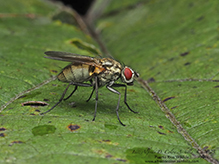 |
|
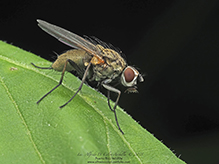 |
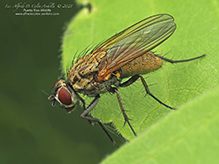 |
|
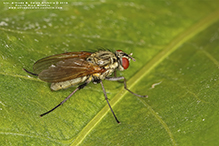 |
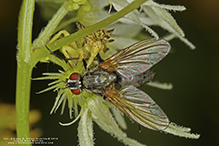 |
|
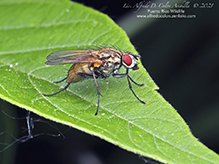 |
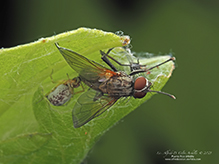 |
|
MinnesotaSeasons.com Photos |
||
|
||
|

Slideshows |
|

Visitor Videos |
||
Share your video of this insect. |
||
This button not working for you? |
||
|
Other Videos |
||
|

Visitor Sightings |
||
Report a sighting of this insect. |
||
This button not working for you? |
||
Alfredo Colon |
Location: Albany, NY |
 |
Alfredo Colon |
Location: Albany, NY |
 |
Alfredo Colon |
Location: Albany, NY |
 |
Alfredo Colon |
Location: Albany, NY |
 |
| Alfredo Colon 8/24/2022 |
Location: Woodbury, MN |
 |
| Alfredo Colon 6/30/2021 |
Location: Woodbury, MN |
 |
| Alfredo Colon 6/3/2021 |
Location: Woodbury, MN |
 |
| Alfredo Colon 5/30 to 6/1/2021 |
Location: Woodbury, MN |
 |
| Alfredo Colon 8/13/2019 |
Location: Woodbury, MN |
 |
| Alfredo Colon 8/10/2019 |
Location: Woodbury, MN |
 |
MinnesotaSeasons.com Sightings |
||
|

Created: 11/16/2020 Last Updated: © MinnesotaSeasons.com. All rights reserved. |
